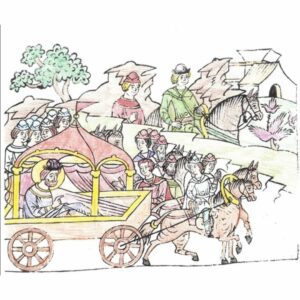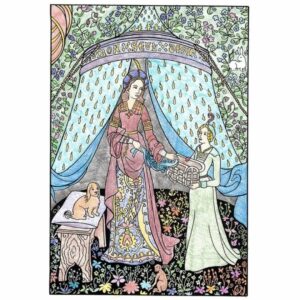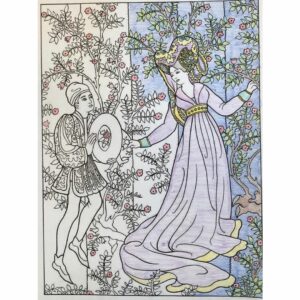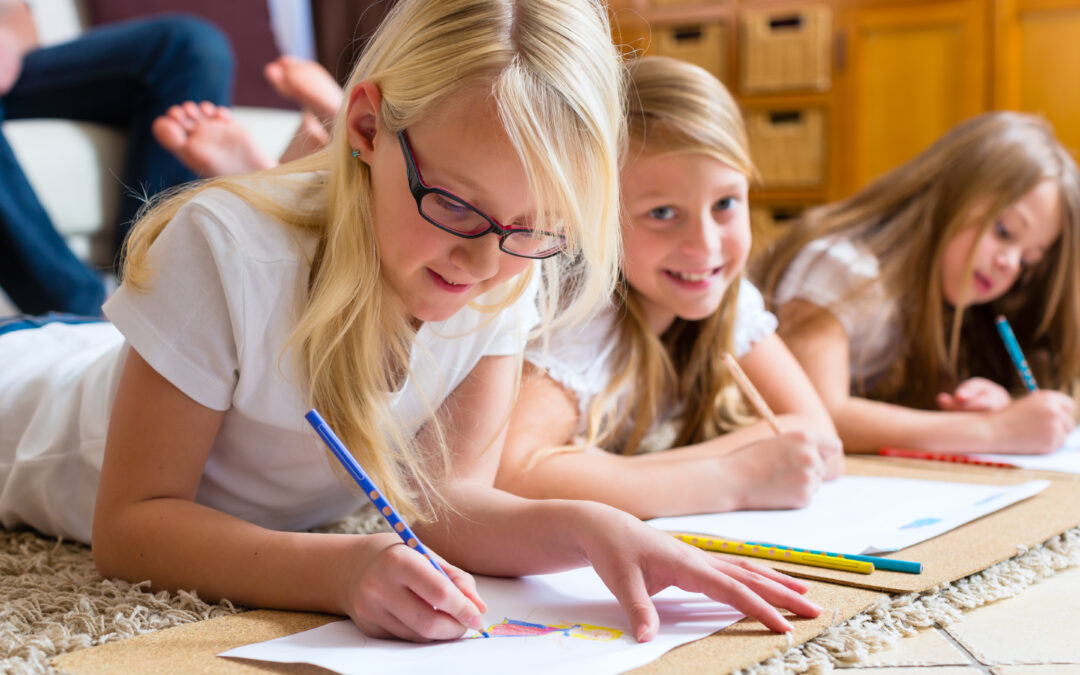Coloring With Your Older Children
We often associate coloring and crayons with little children. However, coloring with older children, including teens, can not only build family bonds but also be an academic pursuit.
Coloring with children is one of the most universal parental experiences. If you are a parent, keeping a big bin of crayons or colored pencils is a must, along with copious supplies of drawing paper on hand at all times. There’s something wonderful about coloring that evokes a child’s inherent creative instincts. Psychological studies have shown that working with colors is linked to brain development in young children. Coloring, in particular, is an act of emotional expressiveness, as children’s choices of what to put on paper are linked with their emotional state at the time. Whether coloring in a coloring book or creating a composition from scratch, coloring is a wholesome activity that is good for children’s brain development and emotional well-being.
These benefits are multiplied when parents and children color together. Coloring is one of the simplest and most emotionally nourishing activities a parent can do with their child.
In the past, coloring was associated with small children. However, more coloring materials have been published in recent years geared toward older kids and even adults. Johanna Basford is the most notable artist in this genre. Her work has become the gold standard for sophisticated, mature coloring books. For older children or adults, coloring is a profoundly relaxing activity that relieves stress. If you do it together, it can be a special bonding time.
I started coloring with my older daughter in the evening a few years ago. Besides being a great bonding activity and an opportunity for me to reconnect with her, it provided an excellent occasion for her to decompress after a challenging day of homeschool studies. We colored in some teen-adult-oriented coloring books, but I also found some fantastic coloring resources for free online. As a history fanatic, I searched for “medieval coloring pages” and found many beautiful, intricate pictures perfect for coloring with teenagers. Here’s some of our work:



I found these times coloring with my teenage daughter to be truly special. They are memories she’ll take with her into adulthood. In a homeschool environment, it is easy to prioritize time with the younger kids. They need more guidance, more attention, and more “hands-on” time devoted to working with a parent. If you’re not careful, your older kids can start to feel left out—like they are on the back burner while the bulk of mom’s attention goes to the younger sibs. Coloring with my older daughter was a great way to remedy this. I would put a video on for the little kids, then print off one of these medieval coloring pages. My daughter and I would then sit at the table together and start coloring. Sometimes, we sat quietly; sometimes, we talked about the day. Sometimes, we got super focused on the art, especially when the drawing was quite intricate. But whether we were working intently or chatting leisurely while we colored, the point was that it was our special time to do something creative together.
It became a special bonding time with my daughter. If we went too long without coloring, she would ask, “Dad, can we color again soon?” It’s been four years, and we are still coloring! Here’s a picture we are working on right now—

If you’ve never colored with your older teenage children, I recommend it as a really fun, easy, and meaningful way to bond with your kids and enjoy a “cooling down” period if things are getting hectic. All Catholic homeschoolers need some cooling down now and then.
What are your thoughts on this topic? To continue the discussion, join me and other homeschooling parents at our Homeschool Connections Community or our Facebook group!






